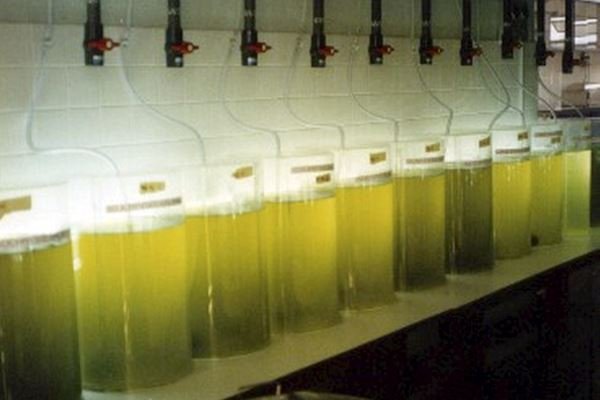How to Culture T-Iso (Isochrysis galbana): The Gold Standard for Larval Nutrition
How to Culture T-Iso (Isochrysis galbana): The Gold Standard for Larval Nutrition
T-Iso, short for Isochrysis galbana (Tahitian strain), is a golden-brown flagellated microalga packed with DHA, making it one of the most important species in marine aquaculture. It’s especially valued for feeding bivalves, copepods, rotifers, and larval fish due to its small cell size (~4–6 microns), high digestibility, and excellent enrichment potential.
What You’ll Need
T-Iso starter culture
F/2 or Walne’s nutrient mix
Saltwater (1.018–1.022 SG)
Full-spectrum light (6,500–10,000K, 12–16 hrs/day)
Air pump + rigid airline tubing
Sterile container (HDPE or glass)
Optional: gentle stir plate (helps prevent cell settling)
Culturing Steps
1. Prepare Culture Medium
Mix RO/DI water with marine salt to ~1.020 SG. Add your nutrient mix (F/2 is standard) and allow the mix to sit until fully dissolved.
2. Inoculate
Add the T-Iso starter to your prepared medium once at room temperature. Swirl gently to distribute.
3. Aerate Gently
T-Iso is fragile and benefits from fine, low-turbulence aeration. Avoid strong bubbling, which can shear cells.
4. Light It Up
Provide 12–16 hours of full-spectrum light daily. Keep the temperature stable, ideally between 20–26°C. Avoid overheating the culture.
5. Monitor Growth
Culture should shift from light tan to golden-brown in 4–7 days. Healthy T-Iso will smell clean, not foul.
6. Harvest
Harvest by decanting or using a fine mesh sieve. Use within a few days or refrigerate. Always maintain a backup culture to prevent full loss.
Tips for Success
Sanitize all gear to avoid contamination (T-Iso crashes easily).
Avoid stagnant zones—T-Iso tends to clump and settle without movement.
Use graduated scaling: start small (e.g., 500mL) and build to larger volumes.
Why Culture T-Iso?
High in DHA – perfect for enriching pods and rotifers
Essential for bivalves and larval stages
Small cell size for broad compatibility
Excellent for long-term pod culture support
If you're serious about breeding or want to support a thriving reef food web, culturing T-Iso is one of the best moves you can make.
